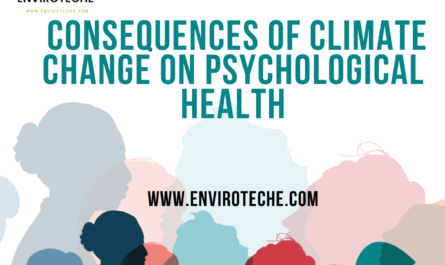
Water is necessary for life, and access to safe drinking water is a basic human right. However, millions of people worldwide lack access to safe drinking water and proper sanitation. This has resulted in a slew of health issues and higher mortality rates in various places of the world. The United Nations recognized the significance of water-related sustainable development goals (SDGs) by including them in their 2030 Agenda for Sustainable Development. In this blog post, we will look at how water treatment is an important component of the SDGs and look at some new solutions that can help us accomplish these objectives.
Water treatment is critical to ensuring access to safe drinking water and sanitary facilities. It entails cleaning wastewater before it is discharged into natural bodies of water or repurposed for other uses such as irrigation or industrial use.
Untreated wastewater contains dangerous pollutants such as pathogens, heavy metals, organic debris, medicines, and other contaminants that, if not effectively treated before release into aquatic environments, can cause serious environmental damage. Furthermore, contaminated drinking water can cause a variety of health problems such as diarrhoea, cholera, typhoid fever, and hepatitis A&E virus infections, which are responsible for millions of fatalities worldwide each year.
As a result, it is critical that we treat our wastewater effectively in order to protect the environment while also protecting public health.
Sustainable Development Goals Related To Water Treatment
Sustainable development goals (SDGs) are 17 global goals approved by member states at the United Nations General Assembly in 2015 with the goal of eradicating poverty, conserving the environment, fostering peace, and ensuring no one is left behind. Three SDGs in particular are directly related to ensuring universal access to safe drinking water and adequate sanitation:
Goal 6: Clean Water and Sanitation
Goal six aims at improving universal access to safe drinking water sources while increasing efforts towards effective management practices regarding freshwater resources globally. It also aims to ensure that everyone has access to adequate sanitation facilities.
Goal 9: Industry, Innovation and Infrastructure
Goal nine is about building resilient infrastructure and promoting sustainable industrialization by investing in environmentally friendly technologies, research, and development while creating job opportunities.
Goal 12: Responsible Consumption and Production
Goal twelve focuses on ensuring sustainable consumption patterns through the efficient use of natural resources while reducing waste generation and pollution levels from various industries globally.
Innovative Solutions for Water Treatment
Several innovative solutions have emerged for water treatment over the years that can help us achieve our SDGs related to water treatment. Some of these are:
Membrane Filtration Technology
Membrane filtration technique involves filtering contaminants from wastewater using semi-permeable membranes with pores less than a micron in size. This method removes pathogens, heavy metals, organic materials, medicines, and other pollutants from wastewater. The filtered water can subsequently be reused or discharged back into natural bodies of water without harming aquatic ecosystems.
Constructed Wetlands
Constructed wetlands mimic natural wetland systems where plants absorb nutrients like nitrogen and phosphorus from wastewater as it passes through their roots before being released into freshwater systems naturally. They are cost-effective and low-maintenance compared to traditional chemical treatments used for nutrient removal purposes at sewage treatment plants (STPs).
Solar Disinfection Technology
SODIS, or solar disinfection technology, is a novel and low-cost way of disinfecting water with sunshine. This technique is especially useful in areas where access to safe drinking water is limited, and it has been shown to reduce the risk of waterborne infections. In this post, we will go over the basics of solar disinfection technology, including its concepts, benefits, drawbacks, and impact on public health.
The use of sunlight to kill or inactivate pathogenic microorganisms in water is known as solar disinfection technology. The procedure is straightforward and may be carried out with readily available materials.
It consists of two main steps: water is first placed in transparent plastic or glass containers, such as PET bottles, and then exposed to sunlight for a specific period. The combination of UV-A radiation and increased temperature during solar exposure plays a crucial role in disinfecting the water.
The principles behind solar disinfection are based on several factors. Firstly, the UV-A radiation present in sunlight damages the genetic material of microorganisms, preventing their ability to reproduce. Secondly, the increase in temperature due to solar exposure further aids in microbial inactivation. These two factors combined effectively reduce the concentration of pathogens in the water, making it safe for consumption.
One of the significant advantages of solar disinfection technology is its affordability. The method requires no complex equipment or electricity, making it accessible to low-income communities in developing countries. The materials used, such as PET bottles, are inexpensive and widely available. Moreover, the simplicity of the process allows for easy implementation and user acceptance, as it does not require extensive training or technical expertise.
Solar disinfection also has positive environmental implications. It does not rely on chemical disinfectants, which eliminates the need for their production, transportation, and disposal. This reduces the carbon footprint associated with conventional water treatment methods. Additionally, solar disinfection promotes the use of renewable energy, contributing to sustainable practices.
Although solar disinfection technology is highly beneficial, it does have some limitations. The process is relatively slow compared to other water treatment methods, requiring several hours of solar exposure for effective disinfection. It is also weather-dependent, as overcast skies or low UV levels can hinder the disinfection process. Furthermore, solar disinfection does not remove chemical contaminants or particulate matter from water, so it is most effective when used in conjunction with pre-treatment methods.
Solar disinfection technology has proven to be a beneficial tool in lowering waterborne infections in terms of public health impact. Diarrheal infections, which are frequently caused by contaminated water, are a major source of illness and mortality, especially in underdeveloped nations. Communities can drastically reduce the microbial load in their water by adopting solar disinfection, resulting in fewer diarrheal diseases and subsequent benefits in overall health.
Numerous studies have shown that solar disinfection is successful at reducing harmful microorganisms such as bacteria, viruses, and parasites. For example, studies in Bolivia, Kenya, and India have revealed significant decreases in microbial contamination and, as a result, a decrease in diarrheal disease incidence.
Conclusion
Water treatment is crucial to accomplishing the SDGs relating to universal access to safe drinking water sources and improving sanitary facilities around the world. There are numerous new technologies available today that can assist us in achieving these objectives while minimising the environmental impact caused by wastewater discharge into natural bodies of water. Individuals can help to achieve these aims by practising responsible consumption and production, as well as supporting eco-friendly technologies that encourage global sustainable.
- FREE Earth-inspired courses
- The Graduate Application Portal for King Fahd University, Saudi Arabia is open.
- International Excellence Scholarship 2023-24
- Scholarship in USA
Authors Detail:
Muhammad Shoaib Qamar1, Etisam Mazhar1, Qudrat Ullah1
1Department of Environmental Sciences, Government College University Faisalabad
Check Other Schlorships:
- FREE Earth-inspired courses
- The Graduate Application Portal for King Fahd University, Saudi Arabia is open.
- International Excellence Scholarship 2023-24
- Scholarship in USA
Check Other Schlorships:
